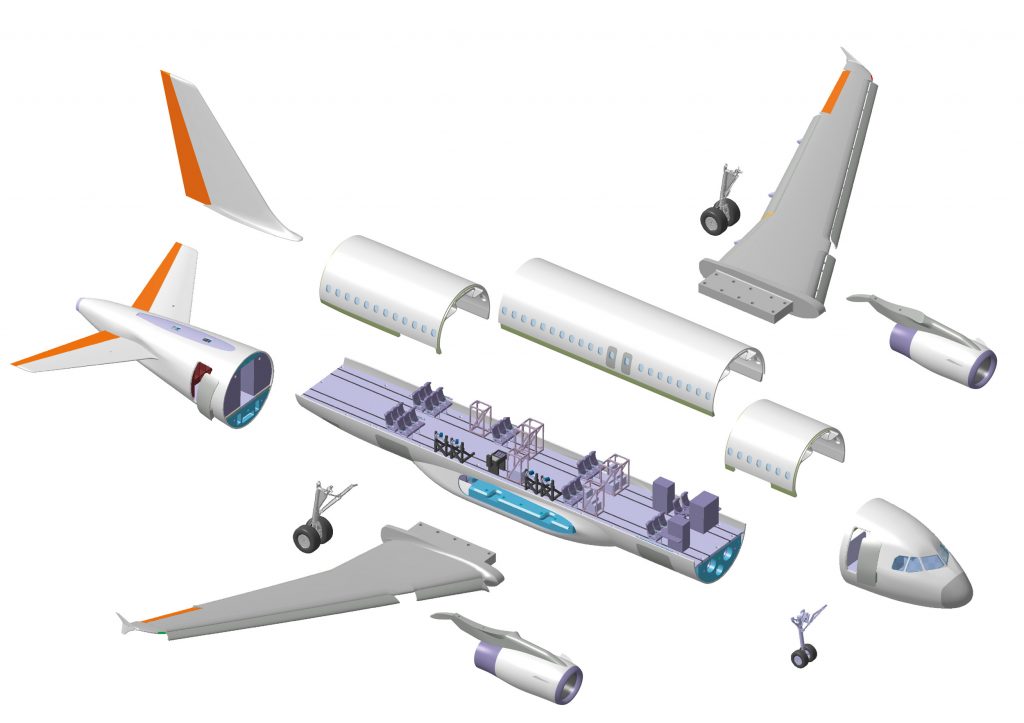Airflow optimisation to reduce fuel consumption
Given the increasing volume of air traffc, reducing fuel consumption and pollutant emissions is a primary objective of European aeronautics research. Aerodynamics with active flow control technologies makes a signifcant contribution to these objectives. This topic is being researched and investigated using the largest aircraft in the DLR research fleet – the Advanced Technology Research Aircraft A320-ATRA. As part of DLR and EU projects, it is used as an experimental platform for researching the engine-wing transition and the empennage, among other things. This research work is illustrated on a highly-detailed technical model of the ATRA – a modular functional model consisting of 400 exchangeable individual components.
In its current confguration, a vertical stabiliser with a simplifed extraction system provides insight into Hybrid Laminar Flow Control (HLFC) research on the almost three-metre-long exhibit. Using HLFC technology, part of the airflow is sucked through tiny holes in the outer skin of the aircraft, to ensure that the flow close to the surface remains laminar – that is, low-drag. The extraction system is currently undergoing test flights as part of the EU AFLoNext project.
Additionally, an Ultra High Bypass Ratio (UHBR) engine has been integrated into the model. While such an extremely effcient engine is in itself more economical and environment-friendly, due to its size it influences the airflow around the wing, thereby reducing the engine’s benefts. By blowing compressed air through fine double slots on the leading edge of the wing, the flow can be positively affected, thereby reducing losses that are a result of the engine mounting. This active flow control technology was tested last year in one of the world’s largest wind tunnels, the TsAGI T 101, and is being further developed for flight testing as part of the EU Clean Sky 2 project.
German Aerospace Center (DLR)
Thomas Weddig · E-Mail: thomas.weddig@dlr.de · DLR.de/en
